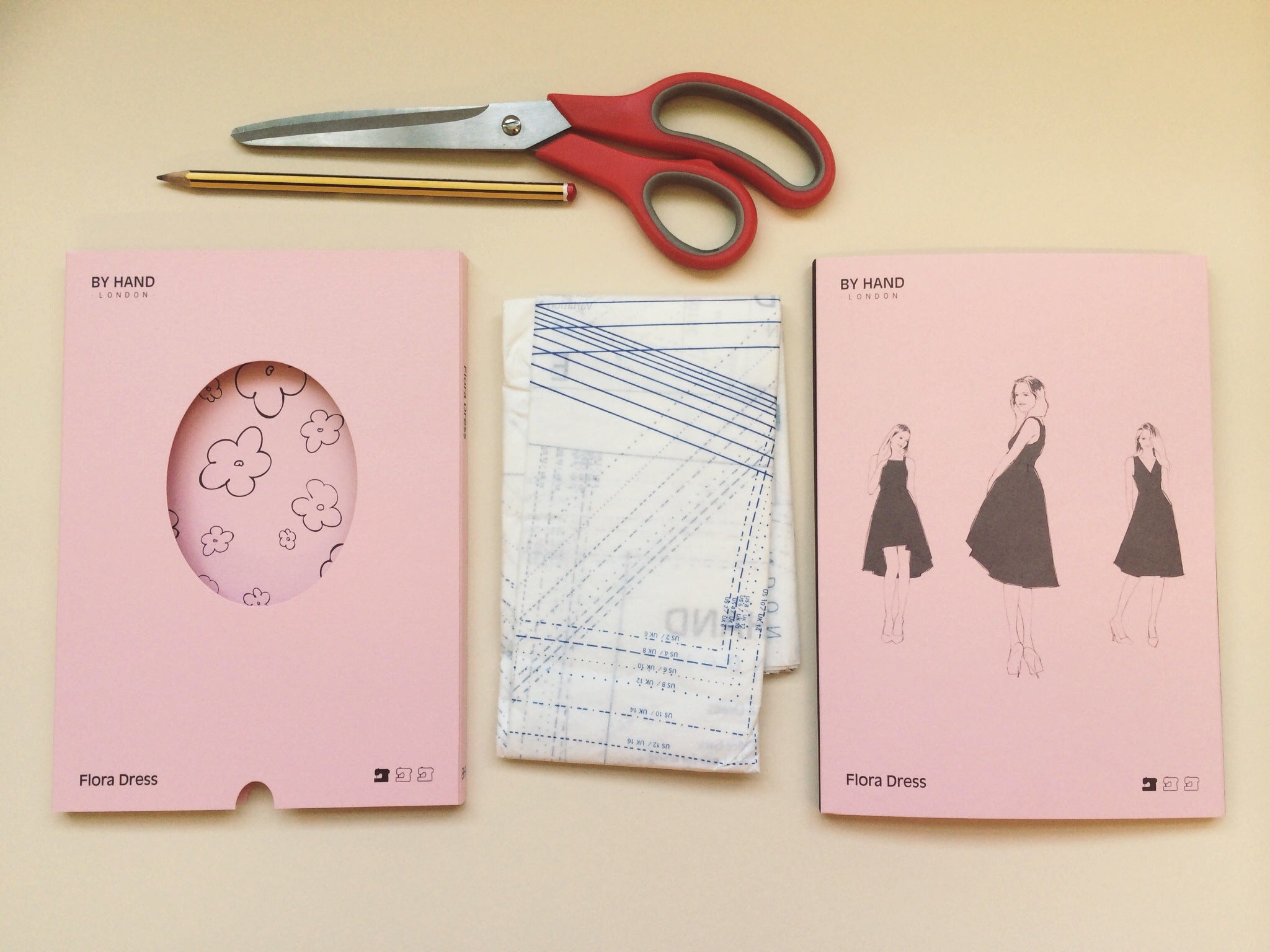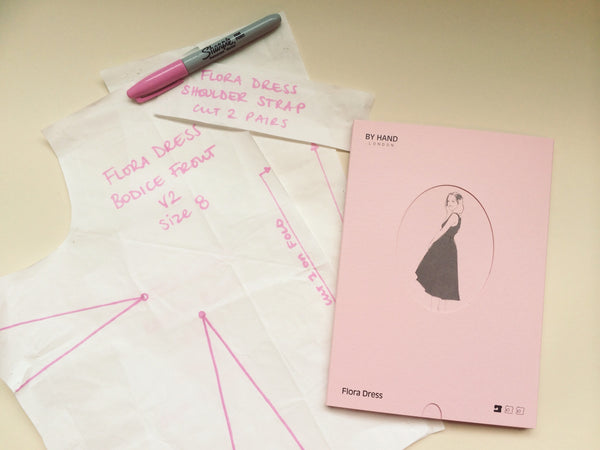The absolute key to dressmaking satisfaction (and indeed dressing satisfaction) is all in the fit. For anyone who has ever stormed out of a high street dressing room feeling utterly deflated at having had to discard every last dress - too small on the ass, too big at the waist, too long of leg - now is your chance to create something you love, that fits your body like a glove. This week will be all about getting to know our own proportions and becoming familiar with pattern alterations that will revolutionise the way you approach dressing yourself.
Today we will be:
- Measuring ourselves
- Finding our size
- Deciding whether or not we'll need to make any adjustments to the pattern
- Tracing and cutting the pattern
Measuring your body
Step one on the path to sewing clothes that fit well and look smokin' is becoming acutely aware of your own figure. Scary, yes, but enlightening, trust me. With a good understanding of your own unique shape comes the insight to choose designs and fabrics that will enhance your best bits and gloss over the rest.
You'll need to grab yourself a tape measure, a piece of paper and a pen. Measuring carefully, and using this post as a guide, make a note of your high bust, full bust and waist measurements. You won't be needing your hip measurement here as the Flora skirt is completely full.
You can now cross reference these measurements with our sizing chart on the back of the Flora Dress folder. Pay extra attention to the "finished measurements" as this will give you a better idea as to how the dress will fit when made up.
If your measurements are falling into the same size group, or very close to, then you likely won't need to make any alterations to the bust (unless of course you're already aware that you might be needing to fix a gapey/tight back or lengthen/shorten the bodice).
However, if your full bust and waist measurements are falling into wildly different size groups, or your full bust is more than 2" larger/smaller than your high bust, you will most likely need to make some simple bust adjustments. Over the next few posts this week we will be delving deep into the world of pattern alteration, covering:
- Full Bust Adjustments & Small Bust Adjustments (FBA & SBA)
- How to fix a gapey back & how to fix a tight back
- Lengthening & shortening the bodice for longer/shorter torso's
But how will you know which, if any, alterations to make??
You'll be needing an FBA if...
- Your full bust is more than 2" bigger than your high bust measurement
- Your full bust measurement falls into a larger size group than your waist measurement
- You find that your waistlines often ride up
You'll be needing an SBA if...
- Your full bust is less than 2" bigger than your high bust measurement
- Your full bust measurement falls into a smaller size group than your waist measurement
- You find that clothes often fit too loosely around your bust
You'll be needing to fix a gapey back if...
- You have particularly slim, narrow or sloping shoulders
- You typically find that dresses gape at the back neckline or leave vertical creases down the back
- Armholes tend to stick out or slip off
You'll be needing to fix a tight back if...
- You have particularly broad shoulders or back
- You find that you have very little room to move your arms about due to the tightness at a garment's back
You'll be needing to lengthen or shorten your bodice if...
- You are particularly tall/short
- Your torso is particularly long/short
- You often find that waistlines fall higher/lower than your natural waistline
With that all figured out, now comes the tedious bit... Tracing. We don't like this part anymore than you do, but in order to preserve the pattern tissue for future makes (consider making for friends and/or weight gain/loss), plus ease of alteration, you will not regret tracing off your pattern pieces. That's a promise.
You'll need a large, smooth, empty table or a large, smooth slice of floor to work on. Carefully open out your pattern tissue and use a brightly coloured, thin nibbed pen to highlight the size you'll be tracing off.
*If your pattern needs alteration, trace off the size as dictated by your waistline measurement, which will later be altered*
Lay over a large piece of tracing paper/dot & cross paper/Swedish tracing paper and secure with pattern weights or anything heavy to keep it in place.
Trace off all the pattern pieces that you'll need, remembering to annotate each piece with the following information:
- Name of pattern
- Variation
- Size
- Pattern piece eg. "Bodice Front"
- Cutting instructions eg. "Cut 1 on fold"
- Grainline
- Notches
- Darts/pleats
Now carefully cut out your traced pattern pieces and you are ready to go! Those of you who don't have any alterations to do, you are done for the week my friends! Those of you altering-along, hang tight and make sure you've got those rulers, pens and sellotape at the ready for next time...







Comments on this post (4)
Dear BHL team :)
I will start to sew my Flora dress this month.
I will certainly have to do some alterations like SBA and gapey back.
I want to sew jersey fabric : so, do you advice me to use a size under my “normal” size or not ?
Thanks in advance,
— Liloo Liloo
The fit on this is perfect! I’ve made a straight up UK 14 muslin and it fits like a dream. I’m currently drafting some kimono 3 1/4 length sleeves, which I cannot wait for you to see. This pattern has got so much potential it’s ridiculous! X (marillawalker@blogspot.co.uk)
— Marilla
I can’t wait! I fall into two different bodice sizes, and need a FBA. I do have a question, my high bust falls into a US4 and my waist is a US8. Should I just use trace US6 for my shoulders and bust and grade it to a US8 for my waist? That’s what I did for my Anna and it fit perfectly. With the fuax wrap, I’m afraid of gaping.
I just bought my fabric just for the Flora because I have a vision in mind.
— The Nerdy Seamstress
So how do you feel about grading patterns? I am a 32 inch over bust, a 38 inch bust and a 28 inch waist. I was planning to grade from shoulders to waist, and then to a fba (since I prefer to try the smaller size before I start lowering shoulders and such)
Is this maybe not a good way to do things? (I am a newbie) or am I a special case because I am so radically pear shaped lol.
— Theresa